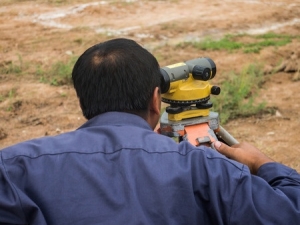 As the technology in the world grew, the job of the land surveyor decreased inversely. Much like how the factory worker was being replaced with machinery that could do the same job, so too were land surveyors. As more apps and drones and smart phones come out with the basic technology to measure a piece of land, land surveyors had to define their jobs even more. That doesn’t mean technology will just completely replace a land surveyor though, as there is always a need for the human eye and the average land surveyor has more skills than just being able to measure a plot of dirt.
As the technology in the world grew, the job of the land surveyor decreased inversely. Much like how the factory worker was being replaced with machinery that could do the same job, so too were land surveyors. As more apps and drones and smart phones come out with the basic technology to measure a piece of land, land surveyors had to define their jobs even more. That doesn’t mean technology will just completely replace a land surveyor though, as there is always a need for the human eye and the average land surveyor has more skills than just being able to measure a plot of dirt.
The main service that is difficult for a robot to replace happens to be boundary surveying; and while not every land surveyor is doing it, it’s the one job that can’t be replaced because the point of it is to be a licensed professional that can give a weighed opinion on a matter to deal with boundary lines. It’s this licensing that is the main reason land surveyors have to be controlled and regulated. Anyone can take out their smart phone and measure a plot of dirt, but land surveyors have been trained and learned what to look for to determine boundary line evidence.
The problem is, not all land surveyors take this boundary surveying seriously. Many land surveyors don’t even take the job for such a role despite the whole point of being licensed is to provide opinions in lawful matters around lands and locations. And the worst part is, some people are noticing that land surveyors just haven’t been caring to do that part of the job. This could result in the regulation of land surveyors to disappear completely.
As long as people still believe in the position that a land surveyor is more knowledgeable about boundaries then the jobs will stay active and the licensing will continue, but the more we enter into an era with drones and robots, the more we will have to fight for our jobs.

